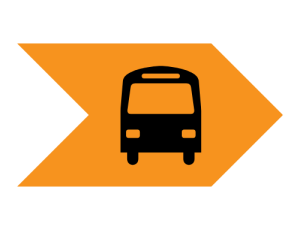Age-Friendly Cleveland 2025-2028 Action Plan
The City of Cleveland was designated as an Age-friendly City by the World Health Organization (WHO) and joined the Global Network of Age-Friendly Cities (GNAFC) in 2014. The City of Cleveland joined the AARP Network of Age-Friendly Communities in 2015. Now, Age-Friendly Cleveland is releasing the second iteration of the Age-Friendly Action Plan.
Check back here for updates on Age-Friendly Cleveland Progress.
Mission: Age-Friendly Cleveland works to create a city where all people are valued, respected, and can thrive knowing their community supports them.
Vision: A City of Cleveland that is accessible and inclusive for people of all ages and abilities.
Age-Friendly Cleveland Domains of Livability
AARP and the WHO have two very similar frameworks with which communities are asked to organize their Age-Friendly work. Both list eight “Domains” and the framework is used by many of the cities, counties, states and countries to become more livable for both older residents and people of all ages.
The addition of a 9th Domain of Livability, Sustainability and Emergency Preparedness was inspired by the work of Age-Friendly Athens County, Ohio, the George V. Voinovich School of Leadership and Public Service at Ohio University and The Ohio State University College of Social Work’s Age-Friendly Innovation Center in Columbus, Ohio. This domain, Sustainability and Emergency Preparedness, will reflect the changing nature of our world, and our citizen’s needs.

Housing
Affordability, essential services, design, modifications, maintenance, aging-in- place, community integration, housing options, living environment.

Outdoor Spaces and Buildings
Environment, green spaces and walkways, outdoor seating, pavements, roads, traffic, cycle paths, safety, services, buildings, public toilets.

Transportation
Affordability, reliability and frequency, travel destinations, age-friendly vehicles, specialized services, priority seating, transport drivers, safety and comfort, transport stops and stations, information, community transport, taxis, roads, driving competence, parking.

Civic Participation and Employment
Options of volunteering, employment options, post- retirement training, accessibility, civic participation, valued contributions, entrepreneurship, paid opportunities to work.

Communication and Information
Offer oral communication, printed information, plain language, automated communication and equipment, broad public access to computers and the internet.

Community Support and Health Services
Service accessibility, offer a range of health and community support services, voluntary support, emergency planning and care, coordinated service delivery.

Sustainability and Emergency Preparedness
Emergency service availability, snow plowing, access to emergency supplies, recycling and waste management education, access to green and renewable energy sources, home weatherization

Social Participation
Accessibility of events and activities, affordability, range of events and activities, facilities and settings, promotion of awareness of activities, addressing isolation, fostering community integration, outreach to those at risk of social isolation.

Respect and Social Inclusion
Respectful and inclusive services, public images of aging, intergenerational and family interactions, public education, community inclusion, economic inclusion.